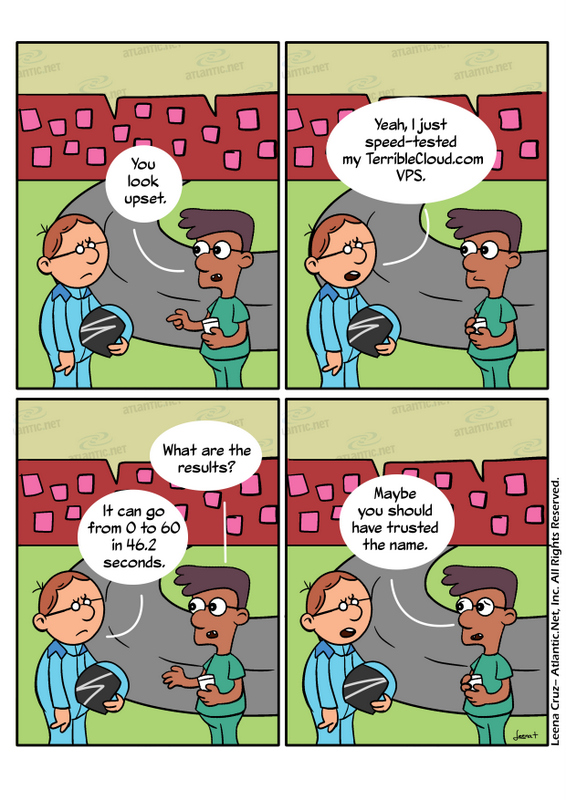How to Improve the Performance of Your website
April 7, 2014 by Editorial Team ( 450 ) under HIPAA Compliant WordPress Hosting
0 Comments
Everyone knows how critical high-quality content has become to building and maintaining a strong Google presence. However, optimizing your site for the search engines is not just about the words or images you use. It’s also about user experience, particularly speed. Obviously, improving the performance of your site will have the added benefit of increasing engagement and conversions.
Several simple tactics can be implemented to make your site faster. With a faster site, your content can realize its true value. You won’t risk alienating your users with slow load times. Ideally, the traffic that experiences your content can also be impressed with how rapidly it is delivered. Although many individuals won’t understand the technology, the end result is a sense that you respect your visitors’ time.
Tip #1 – Test Your Site’s Speed
First, it’s good to know your site’s current speed so you have a sense of the work that lies ahead. Here are a couple of Google tools you can use to do so:
- Site Speed – Using this feature within Analytics (under the Content section), you can determine how quickly your site performs based on geographical location, browser, and page; and
- PageSpeed Insights – This tool ranks the speed of your site on a scale of 1 to 100, as well as providing ideas to enhance its performance broken into various levels of priority.
Tip #2 – Implement Caching
Using caching can vastly improve your site’s performance by decreasing the frequency with which a user’s device needs to access the server. Web developer Steven Lee uses the analogy of a refrigerator to explain caching. If you go to the refrigerator and don’t see any food, you have to go out to the store to get some. A refrigerator can store food in the same way that a browser can store data. Just as storing food in your fridge makes meal preparation more efficient, storing content in browser caches makes Internet usage more efficient.
You want to make sure that your hosting environment has caching enabled. Once it is set up, you want to be certain that all aspects of your site expire after certain timespans. By determining an expiration point, you ensure that a cache does not retain the same data in perpetuity. The expiration will relate to the time that each user originally accesses the content. You should set the cache lower for resources that frequently update than for content that you expect will generally remain static.
Tip #3 – Optimize Java
According to the independent resource site JavaWorld, there are four primary forms of JavaScript optimization. These techniques can be critical to speeding up your site because Java can sometimes cause latency issues for users. The basic ways to improve your JavaScript for a faster website include the following:
- Strength reduction – Revision of the code that replaces any slow operations with speedier ones;
- Common sub-expression elimination – Removal of any computation redundancies;
- Code motion – Change in the position of any code if its result only changes under certain conditions so that it won’t execute unless the result may be different.
- Unrolling loops – Reducing the number of times executions must occur by revising loops to include multiple operations.
Tip #4 – Using a Parallel Server
You can also speed up your site by running a second cloud server parallel to your main server. The addition of a parallel server is similar to a strategy called parallel processing, and it can help incredibly with delivering visual content to your users at a fast pace. While parallel processing breaks complex sets of data into parts that it then processes at the same time, a parallel server can specifically be used for videos and images so that your main server is not strained with that content.
Tip #5 – Optimize Images
Images, especially if you have more than one per page, can be a major factor affecting your site’s speed. Fortunately, there are a couple of simple ways to optimize them so that they load more quickly:
- You want them all to be in one of three formats – GIF (for small, basic images with a maximum of 256 colors), PNG (for uncomplicated images that contain over 256 hues), or JPEG (for complicated, professional-quality images).
- Use Microsoft Paint or Microsoft Office Picture Manager to make your images smaller, rather than adjusting size within WordPress. If you adjust once the image is already loaded into your CMS (content management system), the server will load the image at full size before loading it at the reduced size, actually slowing down your site.
- Use an image compression tool.
- Remove unnecessary bytes from images via Smush.it.
Atlantic.Net knows how fundamentally important speed is to success online – not just for happy users but for happy search engines as well. We want you to do everything you can to speed up your site, but we can help you on our end as well. Atlantic.Net offers website hosting, including HIPAA WordPress Hosting, and we encourage you to Speed-test us now to experience our commitment to delivering your website rapidly worldwide.
By Moazzam Adnan; comic words by Kent Roberts & art by Leena Cruz.
Atlantic.Net also offers HIPAA compliant hosting solutions. Contact us today for a consultation.
Get a $250 Credit and Access to Our Free Tier!
Free Tier includes:
G3.2GB Cloud VPS a Free to Use for One Year
50 GB of Block Storage Free to Use for One Year
50 GB of Snapshots Free to Use for One Year

